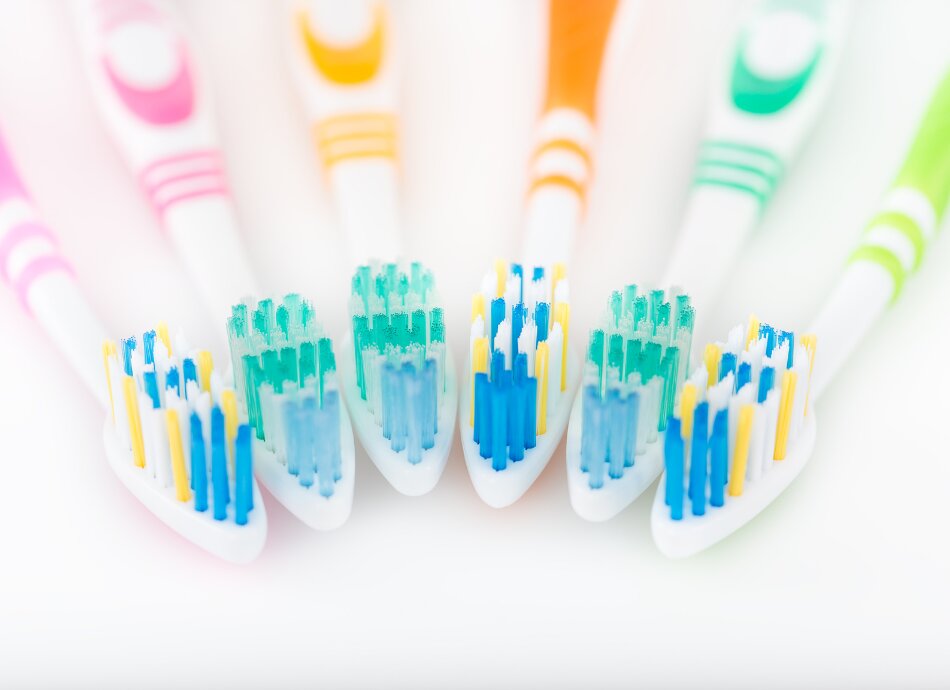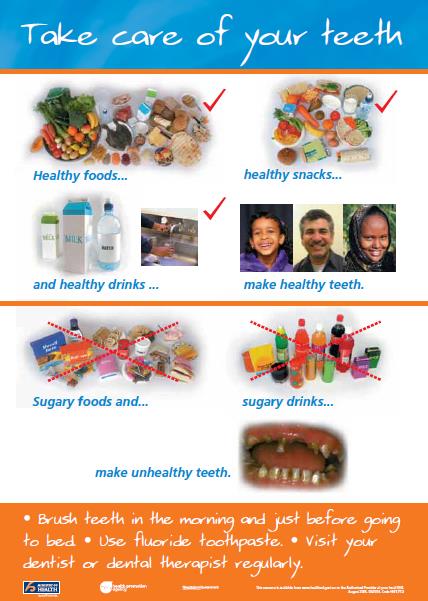Wishing everyone happy holidays and a joyful New Year from the Healthify team. Don't forget to Slip, Slop, Slap and Wrap!
Gum conditions and care
Key points about gum conditions and care
- Gum conditions range from a mild inflammation (redness and swelling) of your gums through to serious gum infection that causes bone loss and can cause tooth loss..
- The keys to preventing gum conditions are to care for your teeth and gums every day, to avoid smoking and have your diabetes well controlled.

The main gum conditions are:
- gingivitis – inflammation of your gums at the surface
- periodontitis – gum disease with changes to bone that are not obvious on the surface
- gum recession – when your gums recede so your teeth look longer which might not be unhealthy.
Gum conditions can be acute (short term) and chronic (long term). Chronic gum conditions may develop slowly over many years and you may not notice any problems until you are in your 30s or 40s. Acute gum conditions may occur from your teenage years.
Men are more likely to develop gum conditions than women, except for women who are pregnant. Bleeding swollen gums are common during pregnancy due to increased dental plaque.
The key to preventing gum conditions developing is to care for your teeth and gums every day, avoid smoking and if you have diabetes, make sure it's well controlled.
 Image credit: Canva
Image credit: Canva
Gingivitis
- This is an inflammation of your gums.
- It's caused by plaque build-up due to poor dental hygiene.
- Symptoms include red or swollen gums or bleeding gums when you brush or floss.
- It's easily treated by regular gentle brushing and flossing.
- If it's not treated, it may lead to periodontitis.
- Read more about gingivitis.
Periodontitis
- This is a gum infection or disease.
- It's caused by plaque and tartar build-up allowing bacteria to damage the tissue around and under your teeth.
- It may develop from untreated gingivitis, smoking or having a suppressed immune system. You may not have bleeding gums as an obvious sign.
- Symptoms can include:
- loose teeth
- bad breath
- temperature sensitive teeth
- teeth that are sore to chew on
- pus in your gums
- gaps opening up in your teeth.
- It can cause lasting damage to your teeth and the bones that support them and is the leading cause of tooth loss.
- Because periodontitis is an advanced form of gum disease, you can’t treat it on your own at home, you need to see a dental professional.
- Read more about periodontitis.
Gum recession
- This is when your gums have been damaged and begin to recede back off your teeth.
- The symptoms are being able to see the roots of your teeth and your teeth looking longer.
- It can be caused by brushing too long or hard, wearing away your gums and then your teeth.
- It's common in older age and isn't necessarily unhealthy – in younger people it's likely to be a sign of poor gum health.
- It may also be a sign of periodontitis.
All risk factors for gum disease relate to the build-up of plaque. They include:
- poor oral hygiene
- smoking (tobacco or cannabis)
- diabetes,
- calculus/tarter (plaque layers that have hardened due to calcium in saliva)
- large fillings
- partial dentures
- pregnancy.
The same good oral hygiene practices that protect your teeth also protect your gums from the bacteria build-up that leads to inflammation and infection.
Things to do:
- Brush your teeth gently twice a day (first thing in the morning and before bed) with a fluoride toothpaste.
- Use a soft or ultra-soft toothbrush – medium and hard toothbrushes can damage your gums and can be less effective at removing plaque.
- Floss once a day (ideally at night) to remove plaque from between your teeth – if you have larger gaps between your teeth a dental professional might recommend you use an interdental brush
- Visit your dentist and dental hygienist regularly for a check-up and professional cleaning (once a year, or more frequently if recommended by a dentist)
- Consider using an electric toothbrush rather than a manual one – the smaller head reaches more easily and access can be better than having to move a manual toothbrush in small spaces.
You should also:
- Be smoke-free and limit alcohol intake.
- Avoid cannabis use as this is associated with severe gingivitis and periodontitis.
- Avoid eating sugary foods between meals.
- Work hard to manage diabetes well as it affects the tiny blood vessels in your gums that help maintain gum health.
Read more about taking care of your teeth.
Avoiding smoking is a key step in keeping your gums healthy. If you smoke, you have a higher risk of gum problems (and oral cancer), such as complications after tooth extractions and surgery in your mouth. This is because the tiny blood vessels that keep your gums in good health and help with healing are affected by smoking. You also have lower resistance to infections and may not heal as well.
Gum conditions among smokers are often not noticed because their gums don't bleed, due to poor blood supply to their gums. If you are a smoker and you stop smoking, your gums may start to bleed. This is because the blood supply is returning to your gums and they are starting to be affected by the plaque.
Apps reviewed by Healthify
You may find it useful to look at some Quit smoking apps.
The following links provide further information about gum conditions and care. Be aware that websites from other countries may have information that differs from New Zealand recommendations.
Dental plaque and gum disease(external link) Patient Info, UK
Gum disease(external link) NHS Choices, UK
Gingivitis and periodontal disease(external link) WebMD, US
Apps
Resources
Teeth care for families(external link) HealthEd, NZ available in the following languages: English(external link), Cook Islands Māori(external link), te reo Māori(external link), Niuean(external link), Samoan(external link), Tokelauan(external link), Tongan(external link)
Take care of your teeth(external link) HealthEd, NZ
References
- EL Morelli, JM Broadbent, JW Leichter, et al. Pregnancy, parity and periodontal disease(external link) Australian Dental Journal. 2018;0:1–9.
- Periodontal (gum) disease(external link) National Institutes of Health, US, 2024
- Robinson P, Deacon S A, Deery C et al. Manual versus powered toothbrushing for oral health. (external link)Cochrane Database Syst Rev 2005; CD002281.
- Effects of smoking and vaping on oral health(external link) Better Health Australia, 2021
See also pages for clinicians on gingivitis and periodontitis
EL Morelli, JM Broadbent, JW Leichter, et al. Pregnancy, parity and periodontal disease(external link) Australian Dental Journal. 2018;0:1–9.
Robinson P, Deacon S A, Deery C, et al. Manual versus powered toothbrushing for oral health (external link)Cochrane Database Syst Rev 2005; CD002281.
Some dental and periodontal diseases(external link) Patient Info Professional, UK, 2014
Chapple IEC, Mealey BL, et al. Periodontal health and gingival diseases and conditions on an intact and a reduced periodontium.(external link) J Clin Periodontol. 2018 Jun;45 Suppl 20:S68-S77
Papapanou PN, Sanz M, et al. Periodontitis – consensus report of workgroup 2 of the 2017 world workshop on the classification of periodontal and peri‐implant diseases and conditions(external link) Clin Periodontol. 2018;45(Suppl 20):S162–S170.
Brochures

HealthEd, NZ, 2022
English, te reo Māori, Samoan, Tongan, Cook Islands Māori, Niuean, Tokelauan

HealthEd, NZ, 2020
Credits: Healthify editorial team. Healthify is brought to you by Health Navigator Charitable Trust.
Reviewed by: Sophie McKenna, General Dental Surgeon
Last reviewed:





